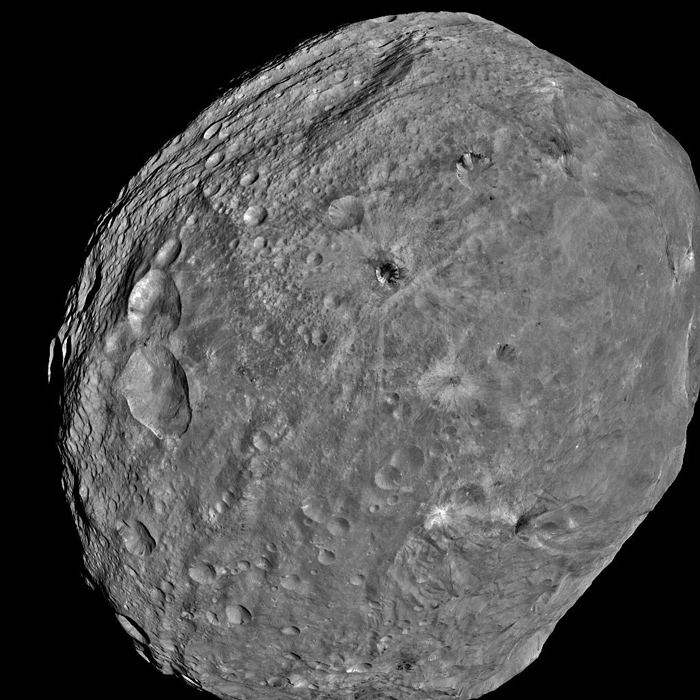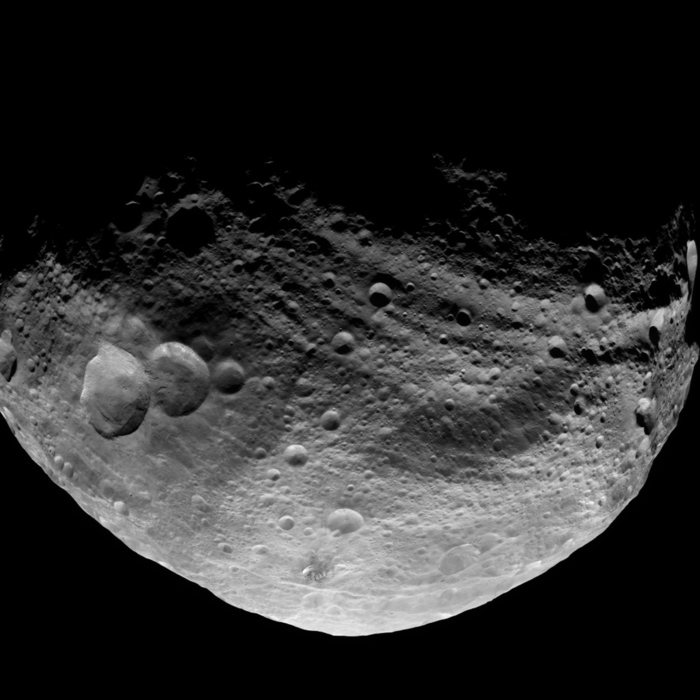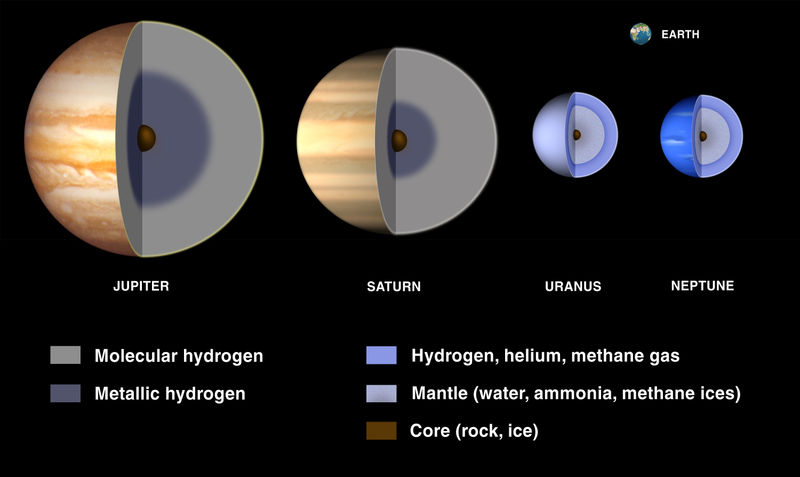Added 1 new A* page:I noticed in an AP article that the Dawn probe now orbiting the giant asteroid Vesta in the Solar System's asteroid belt has sent back more detailed photos. NASA says that Dawn will begin close (1,700 mile distant) orbits of the asteroid for scientific study on the 11th of this month; it will approach as close as 110 miles in its year-long study of the possible dwarf planet.
Based on the images so far, scientists have been surprised by the variety of features on the asteroid's surface, most notably a series of deep grooves along the equator, and a series of three old craters informally called "Snowman" due to their arrangement; you can see them on the left here, with some other grooves visible above them--this is from about 3,200 miles (5,200 kilometers) away (keep in mind that Vesta averages about 530 km--330 miles--across):

image by NASA (source)
and as seen from Vesta's dark side:

image by NASA (source)
~~~~~~
In other Solar System exploration news, the Juno spacecraft will launch on Friday for Jupiter. When it reaches the gas giant in 2016, it will conduct a detailed study of the planet's magnetosphere, among other things; Jupiter's magnetosphere should be a good one to study, because unlike a rocky planet like Earth, where a good deal of the magnetosphere is hidden from view inside the planet, with a gas giant like Jupiter the right instruments can see through the gas to study the magnetosphere right down to the center, or thereabouts (it should also be able to tell for sure if Jupiter *has* a rocky center)--also, Jupiter's magnetosphere is over twenty times stronger than Earth's. One question that it is hoped Juno will answer is whether Jupiter's magnetosphere is generated by compressed hydrogen gas inside the planet, where the pressure is so intense that it squeezes electrons off the hydrogen molecules, allowing the gas to conduct electricity, or by hydrogen even farther down, near the core, where the pressure becomes so strong that it compresses the gas down to a liquid called metallic hydrogen. Here's a NASA chart showing the types of hydrogen, along with other elements, in the gas giants:

image by NASA (source)
~~~~~~
As you know, in my spare time I while away the hours googling my own stuff, and in the process of doing that this past weekend I found some nice people who've linked to A* in recent months, so now I'm going to thank them. :D A* was on someone's poll for Webcomic of the Year :o, so thanks to whoever that was--how exciting! Thanks to Mark Linimon for including A* on his favorite comics list. And thanks to Samuel John Klein and his ZehnKatzen Times site for the very interesting article analyzing the dramatic power of black and white in the context of A* and The Twilight Zone. :)
|
